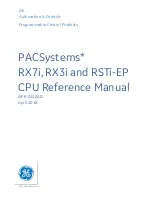
DESCRIPTION AND OPERATION
I/O SECTION
I-E96-207A
2 - 5
only. Its termination unit (TU) or termination module (TM) is con-
figurable for current or voltage inputs; resistors on the TU/TM
convert analog current inputs to voltages that are sent to the COM.
The input select block consists of an analog multiplexer and an
inverting difference amplifier. The multiplexer selects one of
the four inputs or the reference block inputs (calibration volt-
ages). The difference amplifier converts the selected input to a
single ended signal.
The A/D converter block circuits change the input signal to a
12-bit digital value. This value is an analog count that corre-
sponds to the input voltage. Nominal input range is 1 to 5
VDC, however, it allows for a 0.75 to 5.25 VDC input range
which allows 6.25 percent over or under range of the nominal
input range span (4 VDC).
Analog Input Circuit Calibration
A voltage reference generates accurate 1 VDC and 5 VDC sig-
nals. The COM does not have potentiometers to adjust zero off-
set and gain for the A/D converter circuits. Instead, the COM
reads the reference voltages once per minute to calibrate the 0
percent (1 VDC) and 100 percent (5 VDC) points; this calibra-
tion automatically corrects the measured values. It is per-
formed continuously to correct for drift and temperature
variations.
Analog Outputs
The D/A converter block is two separate D/A converters. Each
one converts a 10-bit digital value (analog count) from the pro-
cessor to an analog output (1 to 5 VDC). To check module cir-
cuit integrity, the outputs are fed back to the analog input
section. The feedback values (analog output digital values) are
compared to the values that were sent to the analog output
section to test the output quality. This tests for an output cir-
cuit failure or an open loop between the master module and
field device.
The analog output default switches (S2 and S3) set the output
values during system start-up or
time out
(refer to bus fault
timer in this section). The analog outputs will go to 0 percent or
100 percent output, or they will hold their current values
depending on the setting of S2 and S3.
The analog output mode is also set by switches S2 and S3. S2
and S3 set the type of output, either current or voltage. If cur-
rent mode is selected, the voltage/current circuits on the COM
convert the voltage from the D/A converter to a current output.
The installation section explains how to set S2 and S3.
















































